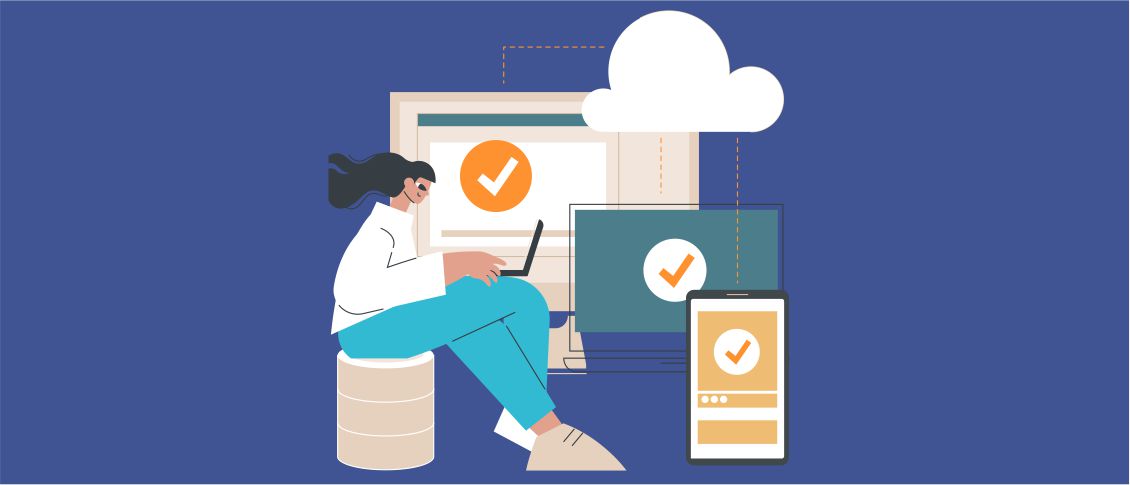Overview
Regardless of the Delphi project cost and its functionality, even the most advanced systems have their life cycles. Sooner or later, any software product that you use in your business processes will become obsolete, even if at the time when you were launching it, it was built with the most innovative technologies. Moreover, market conditions and business needs are continuously changing. It’s quite natural that after some years after its implementation, you may notice that your solution doesn’t satisfy your requirements anymore. And there becomes a necessity to migrate it to a newer Delphi version.
Over more than 14 years of work in the industry, we’ve managed to accumulate rich knowledge about the peculiarities of this process and possible pitfalls. In this article, we’d like to share our expertise and provide key tips that will allow you to be well-prepared for a successful Delphi app migration.
Pitfall 1. Overexpenditure
From the stories of our clients who already had some negative experiences with Delphi migration before contacting us, we’ve noticed that the cases when the final cost of the migration projects turns out to be higher than the initial approval done are quite widespread. Overexpediture of the budget allocated for software migration can cause a lot of problems for the companies and lead to the necessity to reduce the budget for other projects or even leave a half-completed project.
How to avoid it
The only way to avoid such a situation is to conduct high-quality research on the project and its requirements, analyze all the migration processes that you will need to conduct, thoroughly estimate the scope of work to be done and consider possible risks that can result in additional expenses. We never skip these steps before starting the migration. Otherwise, unpleasant surprises related to project costs will be inevitable.
Before starting cooperation with a new partner we recommend you make sure that the project estimates are based on the results of careful analysis and include any possible risks.
Pitfall 2. Technical debt
Technical debt is always a result of poorly written code when development speed has a higher priority than quality. Unfortunately, due to different reasons, many development teams prefer not to deal with the existing technical debt even when they know about it. But the longer these problems are not solved, the more serious consequences they have. The technical debt is growing over time while the development is slowing down. The situation gets even worse when developers who took part in building a solution leave the company and the tech documentation is incomplete.
Of course, it won’t be a serious problem when the migration process will presuppose just moving some functionality to a newer Delphi version but when there are no people who know the business logic of core calculations that are hidden in the legacy code, that’s already a different story. Technical debt acts as a barrier to any changes, updates, and improvements. And it is senseless to ignore it forever. If you try not to notice it, one day you will understand that you have a solution with numerous bugs that may result in serious reputational and financial losses for your business.
How to avoid it
The only way out is to conduct a deep code review. But it is a very time-consuming process and requires specific knowledge and skills from developers. That’s why it is vital to find experts who can fulfill such tasks. From our practice, we can say that very often it is impossible to predict how long it will take which can cause delays in the migration project. The same issues are possible when it is necessary to study the solution architecture, components, database structure, and other aspects. In the worst cases, there can be no legacy code at all as a result developers will have only binary files that they will need to decompile in order to understand at least something.
But of course, the better way to avoid any problems in the future is to take care of high-quality documentation and to timely solve all the issues that can become a huge technical debt.
Pitfall 3. Lack of the desired functionality in the migrated app
The more complex migration you are going to conduct, the more risks related to its functionality can appear. Many companies are afraid that due to migration, their Delphi apps will lose some functionality or that some features will work in the wrong way. And such situations are really possible as some components may be not supported by newer versions of Delphi or something may stop functioning due to the mistakes of programmers. Nevertheless, with the right approach, these problems can be avoided.
How to avoid it
To eliminate the risks of losing functionality in the process of Delphi app migration, it is vital to foresee all possible difficulties and find ways to deal with them proactively. A good team with relevant experience of working with Delphi can always define the most possible issues already at the preparatory stage and will elaborate on the methods to deal with them. For example, at our company, to be on the safe side, we not only try to detect all possible problems in advance but also always devote time to making sure that we’ve clearly defined all the possible testing scenarios before starting to test the app.
Pitfall 4. Downtimes
There are such systems that should work without any pauses or interruptions. Otherwise, a company may face serious losses. We know cases when businesses lose even the most loyal clients due to the downtimes caused by software modernization that’s why in our work we do our best to maintain business continuity while core systems are being migrated. It is one of the most challenging tasks even for the most experienced teams. And even the best preparation can’t guarantee zero risks. However, it can significantly minimize them.
How to avoid it
The first thing that should be done is to get ready for the deployment of a new system. You should define the most appropriate time for it when the deployment won’t cause any difficulties for your employees and clients. As a rule, companies choose weekends and night hours for this process but here everything depends on the specificity of your business. Everything should be thought out in advance, including the process and terms of data migration, the procedure of system deployment, as well as the time when your old system will be shut down.
The technical aspect is not the only one that you should take into account. Your teams who will use the migrated system should be also prepared. It is necessary to find time for training your employees and for explaining to them all the updates. The more they will know about the migrated system, the more comfortable they will feel after its deployment.
Even when you are well-prepared for the deployment, it is recommended to have a plan that will include the algorithm of actions in case something goes wrong. It is also necessary to ensure support for employees who may face bugs that will prevent them from fulfilling their everyday tasks. You should think about alternative methods for carrying out at least the most important processes.
We do not believe that there are any universal migration plans that can be applied in every case. That’s why in our work we have a highly individual approach and create migration plans in full accordance with the particular requirements of every client. But it is also vital to solve potential problems beforehand and to be aware of all the risks. It will help to mitigate their consequences.
Pitfall 5. Malfunctioning of the migrated app
A wrongly functioning app is one of the nightmares for every organization. Migration is a rather complex process that includes multiple steps which pose extra risks.
How to avoid it
The only tip that we can share in this case is to find highly qualified experts that have enough skills and knowledge to migrate your legacy app to a newer technology version. In our practice, we had situations when clients came to us with wrongly migrated Delphi apps ad we can say that it is much more challenging to correct mistakes than to migrate a solution in a proper way from the very beginning. Our approach also includes testing migrated apps and fixing all the bugs before the deployment.
Summing up
Every migration causes serious changes in your software. That’s why it is always very important to think carefully before making a decision and to take into account all the risks.
We always stay honest with our clients. When they come to us with a task to migrate their app but we see that it is not a good choice or if it is not sensible from the financial perspective, we always warn them and offer another strategy.
Thanks to our experience, we’ve developed a unique migration process that allows us not only to seamlessly migrate apps to newer Delphi versions but also to save clients’ time and money.
If you want to learn more about how we conduct Delphi app migration, how much it can cost, and how long it can take, just contact us and book a free consultation. Our experts will analyze your case to offer the most feasible and efficient solution.








